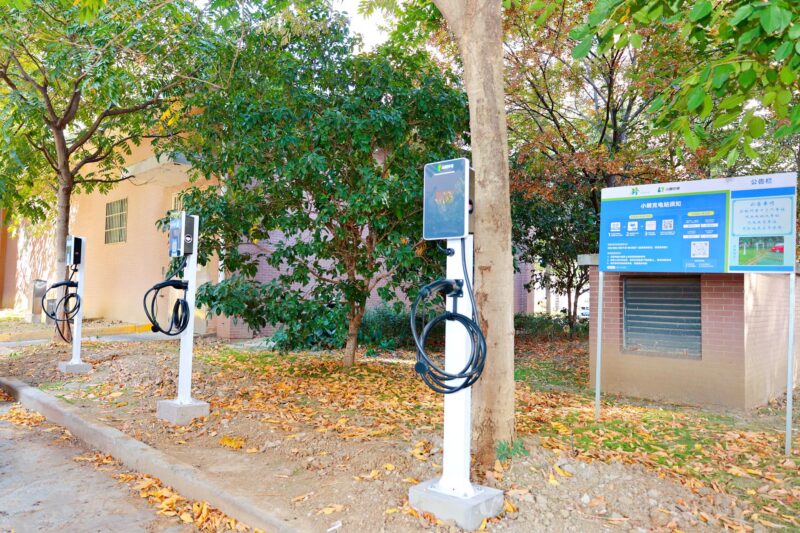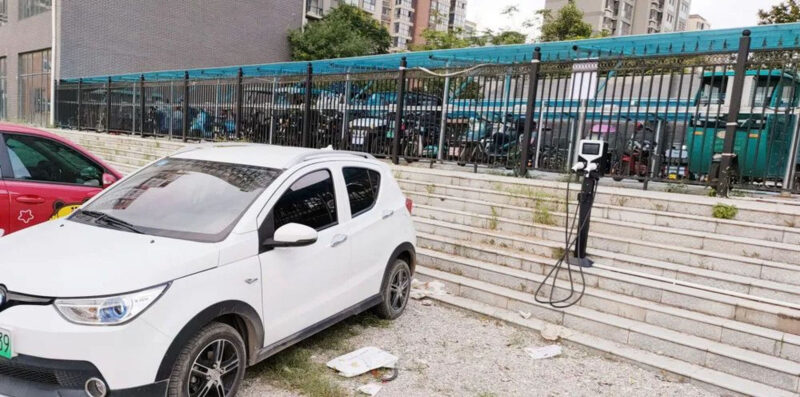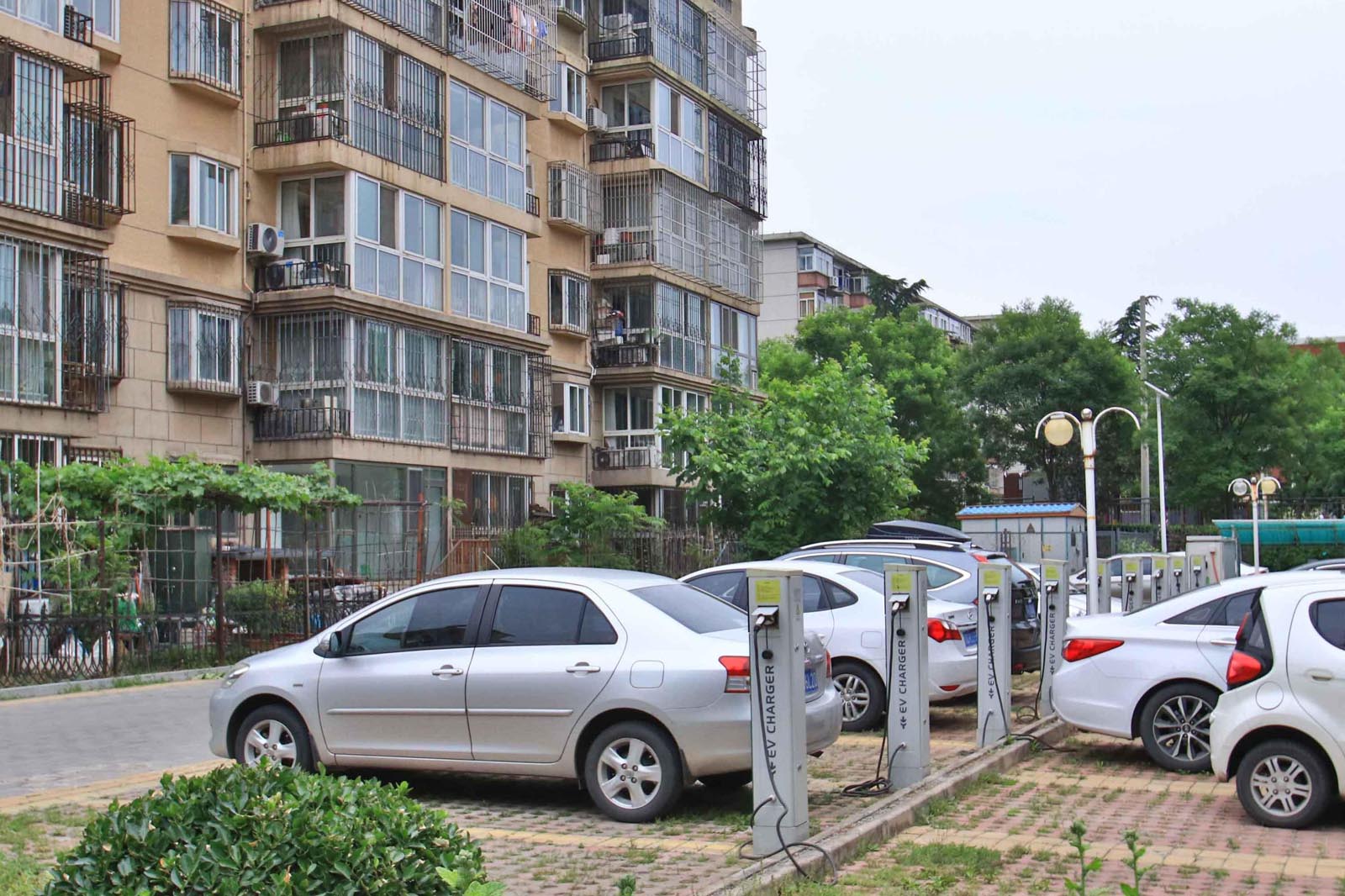Community-shared charging piles are becoming more common, and with that comes the occasional disagreement. You’re excited about your EV, but worried about potential conflicts over shared charging.Disputes are usually resolved through a combination of clear rules, communication, technology, and, if necessary, a formal dispute resolution process. This multi-faceted approach helps ensure fairness and efficiency for all residents.

But don’t worry, it’s usually not as complicated as it sounds! Let’s dive into the details and see how these disputes are typically handled, and how you, as a potential EV owner, can navigate this landscape.
What are the Most Common Causes of Disputes Over Shared EV Charging?
Imagine this: you come home after a long day, only to find all the charging spots occupied, and one car has been there for hours longer than necessary. Frustrating, right?
The most frequent disagreements boil down to a few key issues: charger hogging, unauthorized use, damage to equipment, cost allocation, and accessibility violations. Let’s break these down.

Common Dispute Causes
| Dispute Type | Description | Potential Solutions |
| Charger Hogging | One user occupies a charger for an extended period, preventing others from using it. | Time limits, overstay fees, reservation systems, charging management software. |
| Unauthorized Use | Someone who is not authorized to use the charger (e.g., a guest, a non-resident) uses it. | Access control systems (RFID cards, mobile app authentication), clear signage, warnings. |
| Damage to Equipment | A user damages the charging station, either accidentally or intentionally. | The responsible party is held liable for repair costs. Security cameras, insurance policies. |
| Cost Disputes | Disagreements arise over how the cost of electricity is calculated and billed. | Clear billing policies, usage data from the charging management system. |
| Accessibility | Vehicles blocking ADA access. | Enforce the law, and clearly mark these spaces. |
As you can see, most of these issues stem from a lack of clarity or enforcement of rules. That’s why the next point is so crucial.
How Can Clear Communication and Signage Prevent Disputes?
Think of a well-organized parking lot – clear signs, designated spots, and rules that everyone understands. The same principle applies to shared EV charging.
Clear communication is the cornerstone of dispute prevention. This means proactively informing residents about the charging system, rules, costs, and providing ongoing updates and reminders. It is like preventing the fire, rather than needing to put it out.

Communication Strategies
- Pre-Installation Information: Before the chargers are even installed, hold meetings, send out newsletters, and conduct surveys. Get residents involved and informed from the start.
- Ongoing Updates: Use community newsletters, email lists, or even a dedicated app to keep everyone updated on rules, changes, and any potential issues.
- Clear Signage: Just like those parking signs, charging stations need clear signage. This includes time limits, usage instructions, contact information for reporting problems, and any associated fees. Think big, bold, and easy to understand.
Signage Content: Key Elements
· Policy: 2-hour charging limit
· Fine: Overstaying vehicles will be towed
· Contact: Call xxx-xxx-xxxx to report issues
By ensuring everyone is on the same page, you minimize misunderstandings and potential conflicts. I once lived in a building where the HOA did a fantastic job of communicating the EV charging rules, and it made a huge difference!
What Role Do Technology and Management Systems Play in Dispute Resolution?
Imagine a system that automatically manages who can use the charger, when they can use it, and for how long. That’s the power of technology.
Charging management software and mobile app integration are game-changers. They provide access control, scheduling, billing, and real-time status updates, significantly reducing the potential for disputes.
Key Technological Solutions
- Charging Management Software: This is the brain of the operation. It can handle everything from user authentication to billing and data reporting.
- Mobile App Integration: Residents can use a mobile app to find available chargers, start and stop charging sessions, and make payments. This adds convenience and transparency.
- RFID Cards/Key Fobs: These can be used to control access to the chargers, ensuring only authorized users can utilize them. It’s like a key to the charging station.
- Load Management: This feature is crucial for preventing electrical system overload. The software can manage charging schedules and power output to keep everything running smoothly.
Technology Benefits:
| Feature | Benefit |
| Access Control | Prevents unauthorized use. |
| Scheduling | Allows users to reserve charging slots, reducing wait times and conflicts. |
| Billing | Automates billing, ensuring accurate and transparent cost allocation. |
| Real-time Updates | Users can see the status of chargers (available, in use, offline) before heading to them. |
| Data Reporting | Provides insights into usage patterns, helping optimize the system. |
By leveraging technology, TX charging products’ advanced software management system helps create a fair and efficient charging environment for communities. Additionally, we can customize production according to your needs to meet all specific requirements.
What are the Formal Dispute Resolution Mechanisms for Shared EV Charging?
Even with the best preventative measures, disputes can still arise. That’s where a formal process comes in.
A clear dispute resolution process, outlined in the community’s rules, is essential. This typically involves reporting the issue, informal resolution attempts, a formal complaint process, committee review, and potentially mediation or arbitration.
Steps in the Dispute Resolution Process
- Initial Reporting: The first step is usually to report the issue to the property manager, HOA board, or a designated EV charging committee.
- Informal Resolution: Often, a simple conversation or reminder of the rules can resolve the problem. The property manager might act as a mediator.
- Formal Complaint: If the issue persists, a formal written complaint should be submitted, following the process outlined in the community’s rules.
- Committee Review: The HOA board or a dedicated committee reviews the complaint and gathers information.
- Mediation/Arbitration: If the committee can’t resolve the issue, a neutral third-party mediator or arbitrator may be brought in. This is often a more cost-effective and less adversarial approach than legal action.
- Legal Action (Last Resort): If all else fails, legal action may be necessary. However, this should be avoided if possible due to cost and time.
It’s like having a referee in a game – a neutral party to help resolve conflicts fairly.
What are Best Practices for Establishing a Fair and Effective Shared Charging Policy?
Prevention is always better than cure. A well-crafted policy is the foundation of a harmonious charging environment.
Best practices include conducting an energy assessment, establishing clear rules and regulations (covering installation, usage, cost allocation, and dispute resolution), ensuring accessibility, and regularly reviewing the policy.
Key Elements of a Strong Policy
- Energy Assessment: Before installing anything, have a professional assess the building’s electrical capacity. This will prevent overloads and ensure the system can handle the added demand.
- Clear Rules and Regulations: This is the most critical part. The rules should cover:
- Installation Procedures: Who pays for installation? Are there approved installers?
- Usage Policies: Who can use the chargers? Are there time limits? Is there a reservation system?
- Cost Allocation: How is the cost of electricity determined and billed?
- Dispute Resolution Process: A clear, step-by-step process for resolving conflicts.
- Enforcement of rules and penalty for violation: What are the consequences of violating the rules.
- Accessibility: Ensure charging spaces are compliant with ADA requirements (or local equivalent).
- Future-Proofing: Plan for future demand. It’s often cheaper to install extra capacity during the initial installation.
- Regular Review: The policy should be reviewed and updated periodically to adapt to changing technology and user needs.
By proactively addressing these key areas, communities can minimize the likelihood of disputes.
How can EV charging and energy provision create consumer protection?
People are afraid of getting ripped off or having problems with the shared chargers.EV charging can create consumer protection by integrating with energy management systems, and providing clear billing policies and usage data. This ensures fairness in cost allocation and transparency in the process.
Enhancing Consumer Protection
- Integration: Ensure charging stations and energy providers have compatibility in payment methods
- Billing Transparency: Usage information and records should be well documented.
- Data Monitoring: Usage data and status need to be made available to the user in real time.
- Dispute Resolution: Have a fair and equitable means to address any issues.
By creating a transparent system of rules and information, consumers are better informed, and better protected.
Conclusion
Resolving disputes over community-shared charging piles isn’t just about rules; it’s about creating a fair and efficient system for everyone. Clear communication, robust technology, and a well-defined dispute resolution process are all essential components. By embracing these strategies, communities can ensure a smooth and positive charging experience for all residents.

